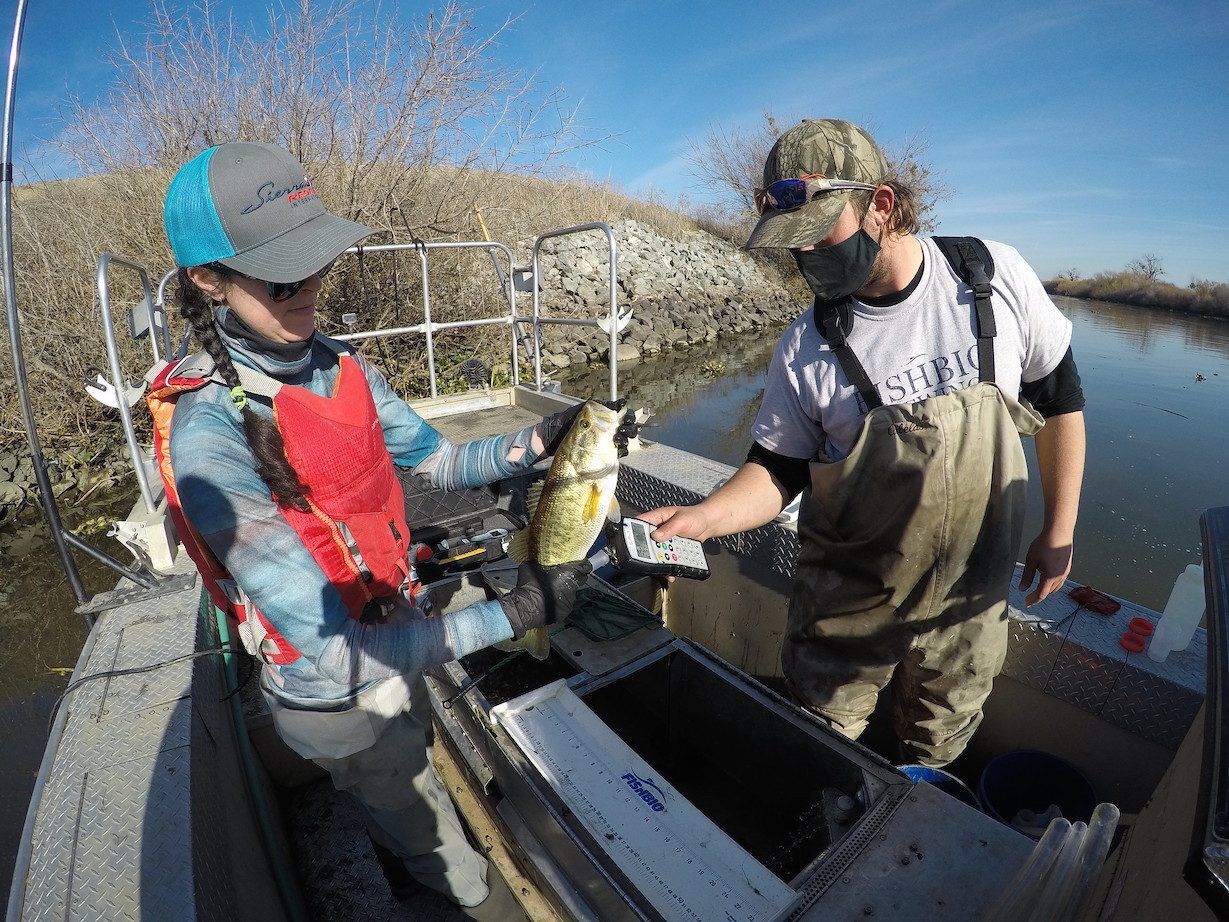


Over the past several decades, non-native fish species have come to dominate the Sacramento-San Joaquin Delta and have substantially altered the food web. Some of these species are known to impact the population dynamics of listed native fish species such as Chinook salmon and delta smelt. However, basic abundance and distribution data are still lacking for most non-native fishes in the Delta, which presents challenges for understanding how habitat conditions, water management, and other factors may influence non-native fish population dynamics. In order to fill this critical data gap, FISHBIO has conducted boat electrofishing surveys throughout the South Delta and lower San Joaquin River since January 2020 to document relative predator abundance and distribution.
This project is part of FISHBIO’s larger efforts to improve understanding of community structure, abundance, distribution, diet, and habitat associations for non-native piscivorous fishes (see map). The goal of the project is to characterize population dynamics of nonnative sport fish through the following objectives:

As part of this project, electrofishing sampling is conducted one week per month from roughly December to May, and up to 20 transects measuring 500 m in length are surveyed each month. Target species for the study include striped bass (Morone saxatilis), black bass (Micropterus spp.) and catfishes (Ameiurus spp. and Ictalurus spp.). Sampled fish that are in good condition and have a fork length greater than 100 mm are tagged with a Passive Integrated Transponder (PIT) tag, and stomach contents are collected using non-destructive gastric lavage prior to release. Habitat data are also recorded at each site, including water depth, substrate, density of submerged aquatic vegetation, bank type, and water quality. Recaptures of tagged fish can be used to assess fish movement patterns and estimate population abundance of each target species.
Increased monitoring of piscivorous fishes could significantly contribute to management and conservation of imperiled native species by improving understanding of predation risk across locations and over time. Ideally, data from this or similar projects could be used in real-time during the salmon outmigration season to determine whether management actions (i.e., increase in flow or turbidity, placement of the Head of Old River Barrier) could be taken to reduce predation risk in the South Delta and increase survival of juvenile salmon and other imperiled species.



